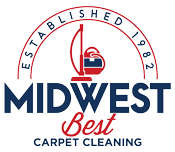Frequently used carpet should be professionally cleaned by a qualified technician at least once a year – perhaps a little longer interval for infrequently used carpet and even sooner for carpet in homes occupied by respiratory sensitive or allergic persons or in homes with indoor pets.
- It’s a good idea to keep sand, grit and grass clippings off walkways outside entries to prevent inward tracking of these abrasive soils.
- Purchase a properly sized entry mat, the bigger the better. There must be room for at least two steps to sufficiently wipe soil from feet before encountering the installed carpet.
- Place entry mats on hard surfaces rather than on carpet where they can trap moisture.
- Vacuum, vacuum, vacuum daily, especially after major events. The sooner you collect soils from the surface, the easier it is to remove them. For most carpet, you should use an upright vacuum with brush agitation, unless your canister vacuum is particularly well designed. The wider the head, the more efficient.
- Typically, deep cleaning should be accomplished on at least a semi-annual basis, with no more than two entry and high-traffic area “rinse” cleanings between the deep cleaning. This is dependent on traffic and daily maintenance as well. At a minimum, some attention should be given to primary entry areas on a quarterly basis.
- If spots are treated immediately, most will respond with plain warm water and very little mild detergent added.
- Use high-efficiency double-lined poly-fiber collection bags. This reduces periodic maintenance such as dusting of furniture, heating, ventilation and air conditioning (HVAC) filter exchange.
- Make sure the HVAC system is slightly positively pressurized as well, which means that air is going out when doors are opened, rather than being sucked in. Proper air exchange rates can be calibrated according to ASHRAE regulations for the building with a trained HVAC contractor.
- Ensure proper air filtration through the HVAC System. High-efficiency pleated filters, rather than inexpensive fiberglass filters, are recommended.
According to the IICRC, the following four-step process is the best way to successfully remove odor from your carpet:
- Remove the source of the odor, as practical (absorb liquids, scoop solids)
- Thoroughly clean odor-affected surfaces and materials. Cleaning is basic to deodorizing
- Treat the odor source with an appropriate odor counteractant (sanitizer, disinfectant, enzyme)
- Seal restorable surfaces, such as subflooring, if practical
Many sources of odor, including pet urine and tobacco smoke, require specialized procedures and techniques and are best addressed by a certified professional.
Unknown to most commercial end users is the fact that commercial upholstery, unlike residential, experiences a lot more daily soiling, wear and tear. Commercial upholstery should be cleaned at least annually by a professional cleaning service that knows how to remove maximum soil, perhaps semi-annually in heavy use situations. The increased use life of the upholstery and the savings in productivity will pay for the cost of cleaning.
- Use caution when entering buildings.
- Make sure electrical power is off and the structure is sound before entering and inspecting a flooded building.
- Small animals or reptiles may also seek shelter inside a structure, so be cautious when re-positioning contents or removing materials.
- Protect yourself. Wear an organic vapor respirator, available from paint or building supply stores, along with rubber gloves, eye protection and protective clothing.
- Ventilate affected areas by opening windows, and eventually, by placing a fan in a window. Work toward the fan as you clean to minimize cross contamination.
- Know what items to throw away. Porous items that absorb contaminated flood water shouldn’t be restored. Drywall, carpet and pad, mattresses, pillows, box springs and particle board normally should be discarded if wet.
- Wet clothing and many household fabrics may be salvageable. Machine washing, including at least a 10-minute soak in detergent and hot water, should remove most contamination and stains.
- Open pockets of saturation. Remove base molding and portions of damaged walls and wet insulation. Locate the water line and measure 15 inches to 20 inches above it. Everything below that should be removed and discarded. Flooring, such as hardwood, laminate or sheet vinyl, should be removed to expose pockets of saturation underneath for cleaning, sanitizing and drying.
- Clean aggressively. Wall cavities and exposed durable materials (studs, joists) should be cleaned by pressure washing with detergent solutions. After thoroughly cleaning and flushing salvageable materials, apply a disinfectant solution liberally.
- A water restoration professional may be needed to perform this service safely and effectively.
- Prevent mold growth. Although it takes a few days to appear, mold thrives in a moist environment with organic material (e.g., paper or particle board), and temperatures between 68°F and 86°F. Keep air moving and maintain moderate temperatures as possible.
- Dry out before you rebuild. To prevent dry rot and on-going structural damage, don’t reconstruct or cover wood materials until its moisture content falls below 16 percent. Moisture meters are available online, but it may be best to hire a water restoration professional to confirm proper drying before reconstruction.
- Consider hiring a professional. A professional water damage restoration company has trained technicians, specialized cleaners and antimicrobial agents, and extraction, drying, dehumidifying and moisture measuring equipment.
Various methods of cleaning have different functions, both in interim maintenance and restorative cleaning. To note, both Shaw Industries and Mohawk, who together manufacture more than two-thirds of the world’s carpet, recommend hot water extraction cleaning.
Your Carpet Isn’t Getting Any Cleaner
What are you waiting for? Schedule Your Cleaning Online Today With Midwest Best Carpet Cleaning!
